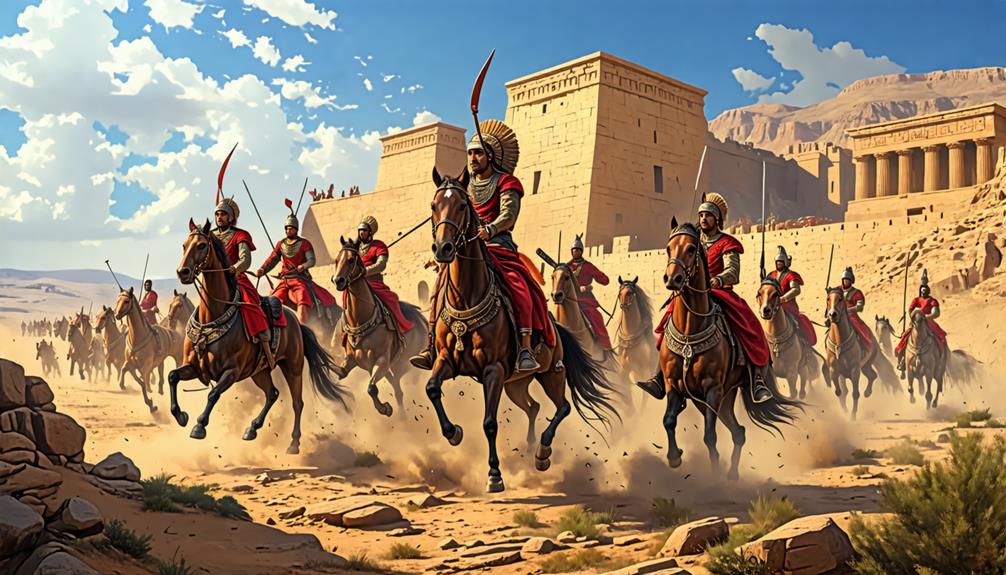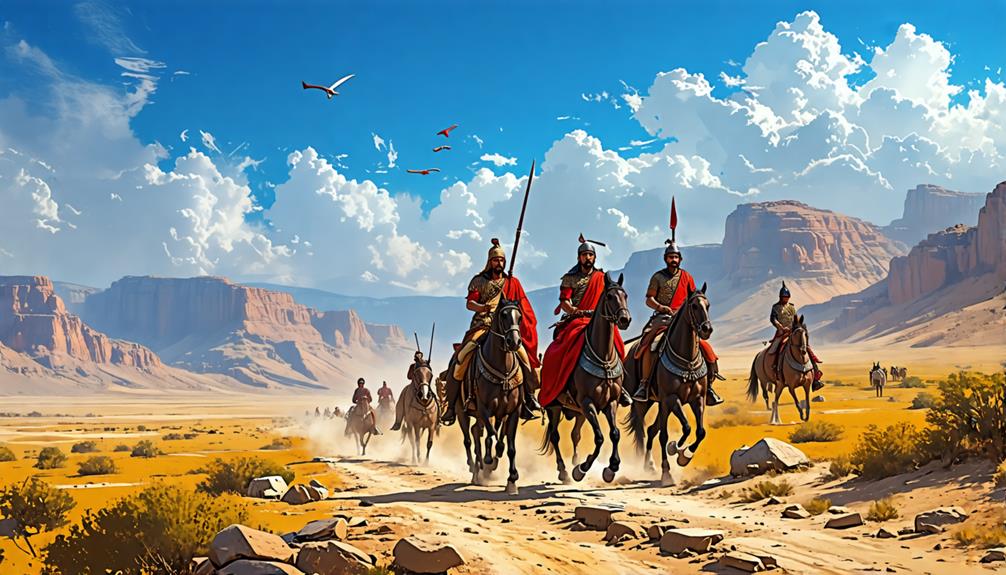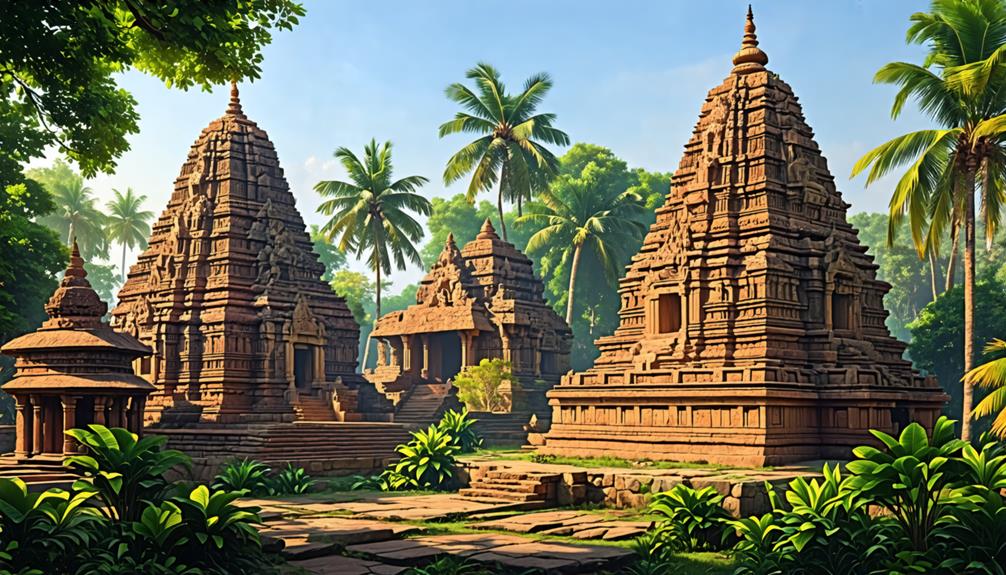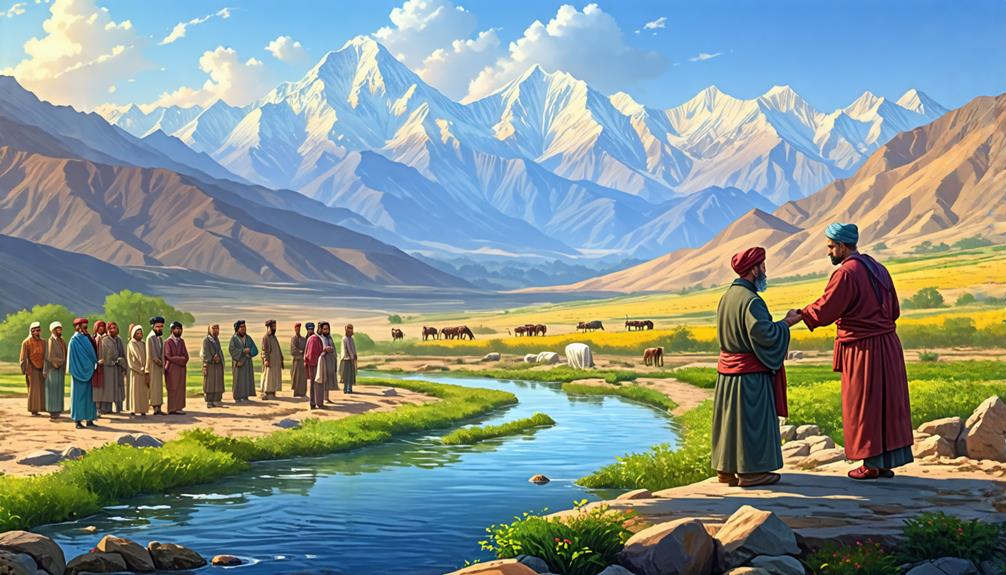Imagine a world where the Mauryan Empire, one of India's greatest dynasties, expanded far beyond its borders. What if their armies had marched across Persia and reached the Mediterranean Sea?
Such a scenario would have dramatically altered the course of history. The cultural, religious, and political landscape of the ancient world would have been transformed in ways we can only begin to imagine.
How would this change history if this scenario had occurred? A Mauryan Empire stretching from India to the Mediterranean would have created a vast, diverse realm. The exchange of ideas, technologies, and traditions across this expanse could have accelerated human progress and fostered unparalleled cultural fusion.
Conquering Persia

In this alternate history, the Mauryan Emperor's conquest of Persia would have drastically altered the region's political and cultural landscape. One theory suggests that a Mauryan victory could have led to a fusion of Indian and Persian traditions, creating a unique blend of art, architecture, and religion.
Another possibility is that the Mauryan Empire, overstretched by its new territories, might've faced challenges in maintaining control, potentially leading to a quicker fragmentation.
Interestingly, a similar scenario did occur centuries later when the Mughal Empire, led by Babur, conquered parts of Persia in the 16th century. This historical event resulted in significant cultural exchange between the two regions, influencing art, literature, and court practices.
However, the extent and longevity of Mughal control over Persian territories were limited compared to the hypothetical Mauryan conquest.
Hellenic Encounters
In an alternative history scenario, the Mauryan Empire's westward expansion could have led to intriguing encounters with the Hellenistic world established by Alexander the Great. One theory suggests that Greek-influenced architecture might've dotted the landscape of Persia, while Mauryan scholars engaged in lively debates with Hellenistic philosophers.
Additionally, soldiers from both cultures could have mingled in frontier garrisons, fostering a unique blend of Indian and Greek customs that would shape the region's future.
While this specific scenario didn't occur, the Kushan Empire, which emerged later, did witness a fusion of Indian, Greek, and Central Asian cultures.
Silk Road Dominance

In an alternate timeline, the Mauryan Empire's reach could have extended further west, potentially allowing them to control vital Silk Road trade routes. This might've led to Mauryan merchants dominating key strategic points along the routes, enabling them to levy taxes on goods transported between the East and West.
One theory is that this would have facilitated the spread of Mauryan coinage and artistic influences across the region, leaving a lasting cultural impact.
It's possible that a similar scenario did play out centuries later, with the Kushan Empire, which controlled significant portions of the Silk Road and whose cultural influences spread from India to Central Asia and beyond.
Buddhist Missionary Zeal
While Ashoka's missionary efforts did spread Buddhism beyond India's borders, the Mauryan Empire itself didn't expand very far into Central Asia or the Mediterranean.
However, one theory is that if they had, Buddhism may have gained an even stronger foothold in these regions. With imperial support, monasteries and stupas could have proliferated along trade routes like the Silk Road, exposing merchants and travelers to the Buddha's teachings.
It's possible that Buddhist texts would have been translated into Greek, Persian, Aramaic, and other regional languages earlier on, allowing for greater cultural exchange. Local philosophies and religions may have absorbed some Buddhist ideas and practices, leading to unique syncretic traditions.
Of course, history took a different path – but interestingly, Buddhism did eventually reach as far as the Mediterranean through the efforts of other missionaries and empires in later centuries.
Mauryan Naval Supremacy

In an intriguing alternative history scenario, the Mauryas could have developed a powerful navy to extend their influence across the Indian Ocean. One theory is that this would have allowed them to control key ports and dominate maritime trade routes, potentially establishing colonies in distant lands.
It's possible that such naval supremacy could have led to expeditions of exploration and conquest beyond India's shores, significantly altering the geopolitical landscape.
Interestingly, similar naval expansion and power projection did occur centuries later under the Chola Dynasty of South India. From the 10th to 12th centuries CE, the Cholas built a formidable navy that allowed them to control trade and establish influence across Southeast Asia and parts of the Indian Ocean.
While the specifics differ, the Chola example provides a historical parallel to this hypothetical Mauryan scenario, demonstrating the potential impact of Indian naval power in the region.
Clash With Han China
In this fascinating alternative history scenario, a clash between the expanding Mauryan Empire and China's Han Dynasty could have dramatically reshaped the ancient world. One possibility is that a Mauryan victory, with their war elephants proving decisive in the rugged terrain, may have opened the door to Indian cultural influence spreading across China.
Conversely, a Han triumph could have led to Chinese goods, ideas, and settlers pouring into India and western Asia.
Interestingly, a similar confrontation did occur centuries later when the Mongol Yuan Dynasty, ruling over China, invaded India and defeated several Indian kingdoms in the 13th century AD. This led to a period of greater cultural exchange between the two civilizations.
However, a full-fledged Mauryan-Han war in a previous era would likely have resulted in far more profound and long-lasting changes to India, China, and Eurasia as a whole.
Unifying Southeast Asia

In an alternate history where the Mauryan Empire expanded further into Southeast Asia, unifying the region under its rule, several outcomes are possible.
One theory suggests that Mauryan administrative systems and Buddhist influences would have significantly altered the cultural, linguistic, and religious landscape of the area, potentially creating a more cohesive regional identity that could have lasted for centuries.
It's worth noting that while the Mauryans didn't achieve this level of expansion in reality, other empires such as the Khmer Empire and the Majapahit Empire did later bring large parts of Southeast Asia under centralized rule.
However, the specific impacts and duration of a hypothetical Mauryan unification remain open to speculation and would have depended on various factors like the stability of the empire, local resistance, and interactions with neighboring powers.
Reshaping Steppe Politics
In an alternative history scenario where the Mauryan Empire expanded into the Central Asian steppes, it's theorized that the region's cultural and political landscape would have been significantly altered.
The presence of Mauryan fortifications across the grasslands could have led to nomadic tribes forming alliances to resist imperial control, potentially resulting in prolonged conflicts between the two groups.
The intermingling of Indo-Aryan and Turkic languages and customs might've given rise to unique hybrid cultures, blending elements from both the Mauryan and nomadic societies. It's possible that this cultural exchange could have had far-reaching effects on art, religion, and social structures in the region.
While the Mauryan Empire never achieved this level of expansion, the Mongol Empire under Genghis Khan and his successors did conquer vast swaths of Central Asia and beyond in the 13th century.
The Mongol conquests led to significant changes in the political, economic, and cultural dynamics of the region, demonstrating the potential impact of a large empire expanding into the steppes.
Technological Exchanges

In an alternate timeline where the Mauryan Empire expanded into the steppes, it's possible their advanced technologies in metallurgy, agriculture, and engineering would have spread across Central Asia.
The Mauryans might've gained valuable knowledge from the steppe peoples in horse breeding and nomadic warfare tactics.
This scenario of a powerful empire expanding into the steppes and exchanging technologies did occur centuries later with the Mongol Empire.
The Mongols facilitated the diffusion of technologies like gunpowder and the printing press between East Asia, the Muslim world, and Europe during their conquests in the 13th century.
Lasting Cultural Synthesis
In an alternative history scenario where the Mauryan Empire expanded into the Central Asian steppes, it's possible that a lasting cultural synthesis between Indian and Central Asian civilizations would have emerged.
One theory is that Mauryan art styles might've blended with local nomadic motifs, while Buddhist teachings could have spread and merged with shamanic traditions.
Additionally, Sanskrit loanwords may have entered Turkic and Iranian languages, leading to a unique and enduring cultural landscape across the region.
It's worth noting that while the Mauryans didn't expand into the steppes, the Kushan Empire, which emerged after the Mauryan period, did extend its influence into Central Asia.
The Kushan Empire facilitated cultural exchanges between India and Central Asia, particularly in the spread of Buddhism and the development of Gandharan art, which blended Indian and Greco-Roman styles.
Conclusion
Just imagine – if you were a Mauryan emperor, you could've had it all! A sprawling empire from Persia to Southeast Asia, with the Silk Road as your personal piggy bank.
You'd be rubbing elbows with the Greeks and Han Chinese, while sending out an army of Buddhist monks to spread the good word.
But hey, who needs world domination when you've got a comfy throne and a legacy that'll last for millennia?

Leave a Reply